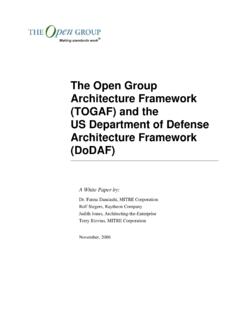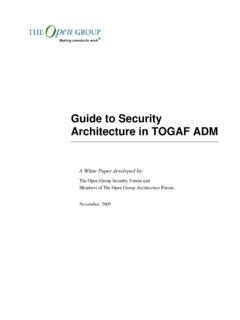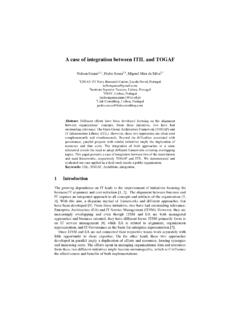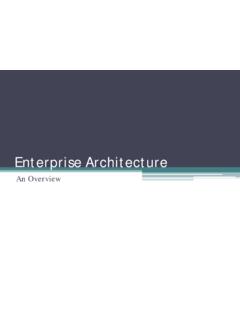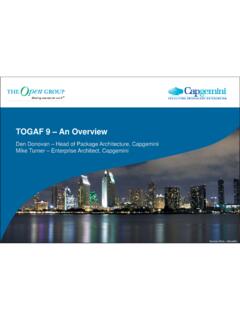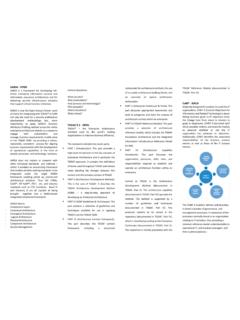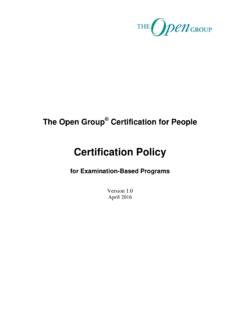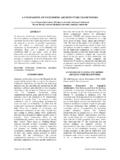Transcription of TOGAF 9.1 Architecture Development Cycle - evasaas.com
1 Preliminary PhasePrepare the organization for successful TOGAF Architecture the preparation and initiation activities required to create an Architecture Capability, including the Customization of TOGAF , selectionof tools, and the definition of Architecture ManagementEnsure that every stage of a TOGAF project is based on andvalidates business are identified, stored, and fed into and out of the relevantADM phases, which dispose of, address, and prioritize A: Architecture Vision Set the scope, constraints, and expectations for a TOGAF the Architecture the business context and create the Statement ofArchitecture B:Business ArchitecturePhase C:Information Systems ArchitecturesPhase D:Technology ArchitectureDevelop architectures in four domains:1. Business2. Information Systems Application3. Information Systems Data 4. TechnologyIn each case, develop the Baseline and Target Architecture andanalyze E:Opportunities and SolutionsPerform initial implementation planning and the identification ofdelivery vehicles for the building blocks identified in the whether an incremental approach is required, and if soidentify Transition F:Migration PlanningDevelop detailed Implementation and Migration Plan that addresseshow to move from the Baseline to the Target G:Implementation GovernanceProvide architectural oversight for the and issue Architecture that the implementation project conforms to the H: Architecture Change ManagementProvide continual monitoring and a change management processto ensure that the Architecture responds to the needs of theenterprise, and maximizes the business Architecture Development CycleN111 Reference Card: TOGAF ADMC opyright 2011 The Open Group.
2 All Rights is a registered trademark of The Open is divided into seven sections as follows:PART I: IntroductionA high-level introduction to the key concepts behind enterprise Architecture and in particular the TOGAF approach. It contains the definitions of terms used throughout TOGAF and release notes detailing the changes between this version and the previous version of II: Architecture Development MethodThe core of TOGAF . It describes the TOGAF Architecture Development Method (ADM) a step-by-step approach to developing an enterprise III: ADM Guidelines and TechniquesA collection of guidelines and techniques available for use in applying TOGAF and the TOGAF ADM. PART IV: Architecture Content FrameworkThe TOGAF content framework, including a structured metamodel for architectural artifacts, the use of re-usable Architecture building blocks, and an overview of typical Architecture V: Enterprise Continuum & ToolsTaxonomies and tools to categorize and store the outputs of Architecture activity within an VI: TOGAF Reference ModelsA selection of architectural reference models, which includes the TOGAF Foundation Architecture , and the Integrated Information Infrastructure Reference Model (III-RM).
3 PART VII: Architecture Capability FrameworkThe organization, processes, skills, roles, and responsibilities required to establish and operate an Architecture function within an enterprise. N111 Reference Card: TOGAF StructureStructure of TOGAF 2011 The Open Group. All Rights is a registered trademark of The Open Group.

